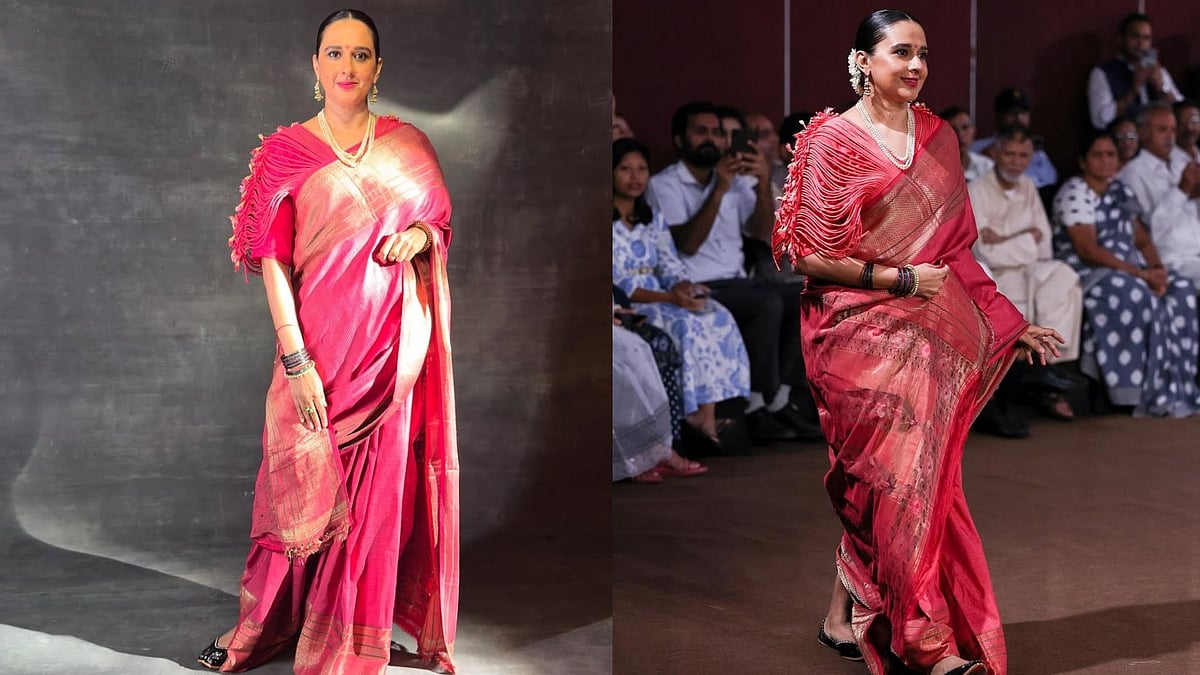Clad In 100-Year-Old Paithani, Maharani Radhikaraje Gaekwad Walks Ramp For Vaishali S
Radhikaraje Gaekwad, the Maharani of the princely state of Baroda, turned the runway into a slice of history

There’s something deeply emotional about draping a saree that once belonged to our mother, grandmother, or great-grandmother. These heirloom pieces are more than just garments – they are living stories, carrying whispers of the past in every thread. Their beauty lies not only in the craftsmanship but also in the memories and milestones they’ve witnessed.
Radhikaraje Gaekwad revives a century-old Paithani
On National Handloom Day, Radhikaraje Gaekwad, the Maharani of the princely state of Baroda, turned the runway into a slice of history. Walking for designer Vaishali Shadangule in her latest collection Naad - The Sound of the Loom, she paired the label’s signature corded blouse with a breathtaking 100-year-old antique silk Paithani saree from her family’s treasured collection.
This particular saree has an extraordinary journey. In 1985, it was showcased at the prestigious Metropolitan Museum of Art’s “Royal India” exhibition in New York – curated by the legendary Indian textile revivalist Martand Singh alongside fashion icon Diana Vreeland. Since then, it had been carefully preserved, rolled away from light and air to protect its delicate weave. Now, decades later, it graced the ramp once more, carrying with it the aura of royalty, artistry, and timeless tradition.
The legacy of the Paithani saree
The Paithani saree originates from the historic town of Paithan near Aurangabad, Maharashtra. Its legacy dates back over 2,000 years, with references found in ancient Buddhist and Hindu texts where it was revered as Dev Vastra – the “fabric of the gods.” In earlier centuries, fine silk arrived from China, while pure gold threads were handwoven into intricate patterns.
Known for its vivid colors and luxurious texture, the Paithani is most celebrated for its peacock and lotus motifs – symbols of grace, purity, and prosperity. Weavers often spend months crafting a single saree. For a six-yard masterpiece, around 500 grams of silk and 250 grams of zari are used. The nine-yard Nauvari Paithani demands even greater skill, time, and materials.
Why heirloom Paithanis are irreplaceable?
Owning an heirloom Paithani is like holding a piece of living history. Each saree carries the signature of its maker, traces of the middlemen who traded it, the aura of those who wore it, and the inevitable patina of age. Unlike mass-produced fabrics, every Paithani is a unique work of art – and when it passes from one generation to the next, it becomes a treasured family heritage.
The story of Radhikaraje’s saree, from a weaver’s loom in rural Maharashtra to a New York museum, from the boudoir of a royal palace to the spotlight of a Delhi runway – is a testament to the Paithani’s enduring charm. It’s a reminder that handloom textiles are not just fashion statements; they are cultural heirlooms, worthy of preservation and celebration for generations to come.
RECENT STORIES
-
-
-
-
-